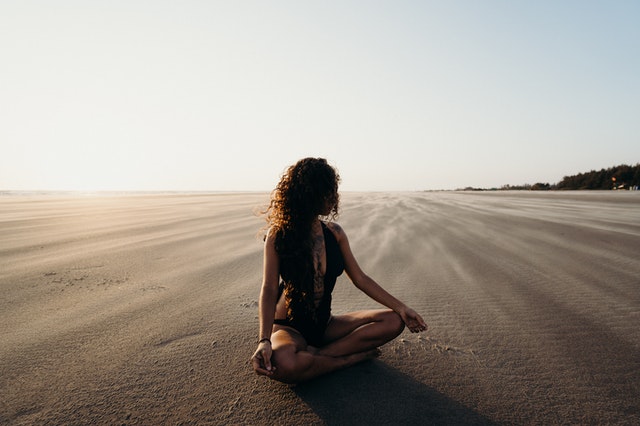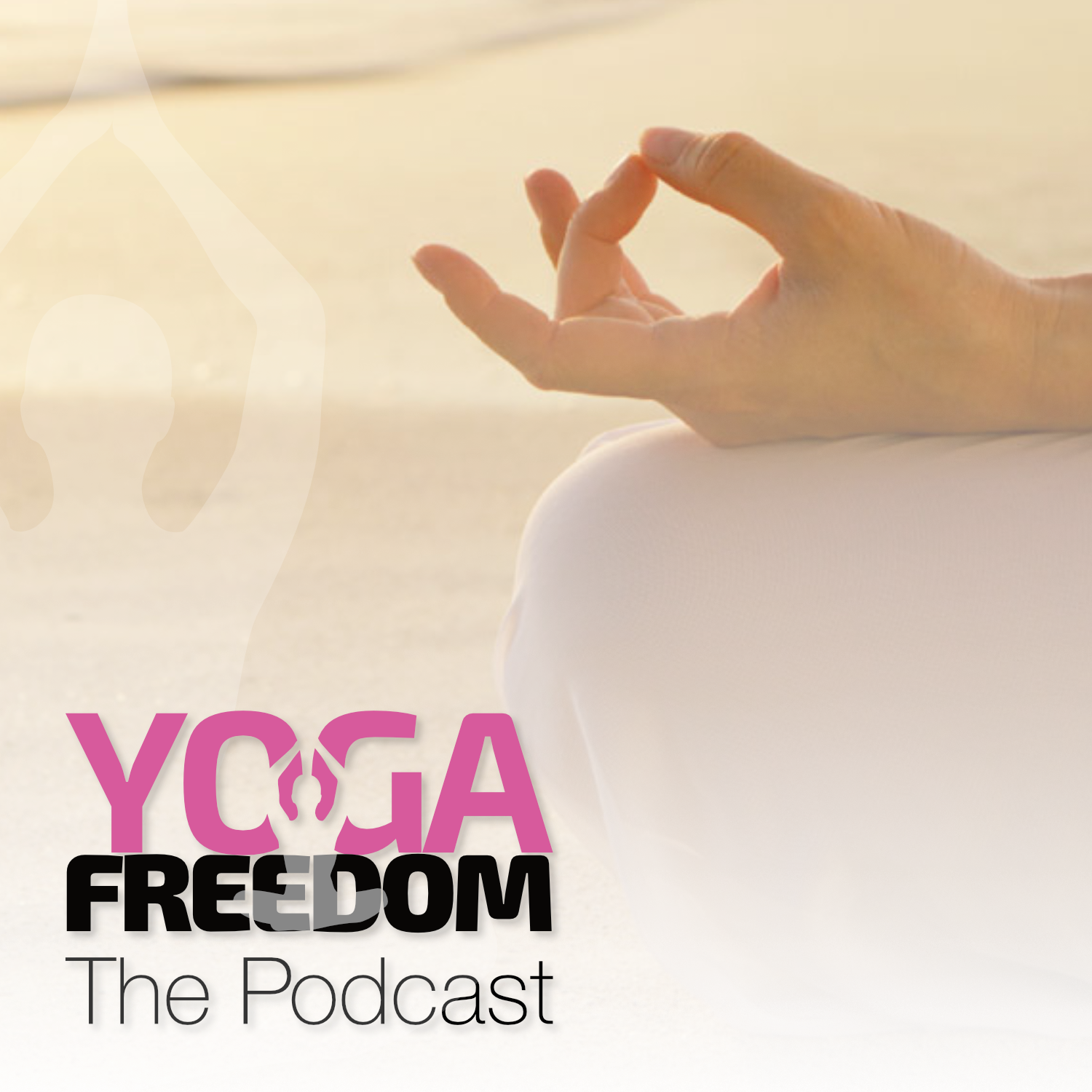Ensuring your yoga practice works for you and not against you!

Hello Yogis.
I thought it was again time to share with you some more yoga tips and practices that will help you to find a practice that suits you!
This month, I am looking at ways you can ensure your yoga practice is working for you and not against you.
You may wonder how yoga can work against you, but my years of experience have shown me it is possible to make matters worse, rather than better, when it comes to balancing health and wellbeing!

How can your yoga practice work against you?
Practicing physical yoga postures in situations that are unhealthy; such as performing very strong poses if you have an injury or illness, or in a way that would be pushing your physical body to excess, is not in the best interest for you or your body and any such practice should therefore be balanced to suit your individual requirements and physical ability at any given time, so as not to cause physical injury or discomfort. Working with a competent teacher, who is sensitive to and responsive to your personal ability, is the best way of ensuring your physical practice of yoga is working for you.
Beyond the physical effects yoga brings to the structures of the body though, Yoga is primarily a subtle practice of energy movement within the body, that leads to a change in ‘conscious awareness’. This is the aspect I am more interested in exploring, within this article.
In yoga philosophy, the energy being influenced as you practice, is known as prana.
Simply put, everything in life is made up of energy; that rock in your garden, the plate on your table, the words you uttered a second ago and yes, your wonderful physical self too!
Rocks have it easy, their energy is pretty stable because they have no fluctuation of mind or awareness that can disturb their energy field.
Within the human energy field though, your movements, your thoughts and emotions and even the breath you take influences your energy system and subsequently how you feel and even how you perceive the world.
This altered ‘awareness’ is what we are trying to understand, through a regular practice of yoga and meditation. You become more sensitive to the more subtle aspects of yourself.
If we start to blindly feed and therefore reinforce a situation that is negative to the body, such as stress or anxiety, or a negative physical or mental state, we can make that worse over time if we continue to add to the energy that created it. We need to use the practice of yoga to recognise these traits and then to work with them to bring harmony to the body and mind.
It is therefore important to adapt a daily yoga practice, in accordance with what is going on at any given time in your life.
I talk a little more about this below but for now, how does yoga philosophy recognise the different aspects of mind and body, energy and awareness that are in constant flux at any given time?

This is described in yoga philosophy through the Kosha system…
The three dimensions of the brain, which we refer to as the conscious, unconscious and subconscious areas of the mind, are known in the ancient yogic texts as the gross, subtle, and causal dimensions of the human personality. These dimensions are divided between what are referred to as the 5 koshas.
The first kosha, Annamaya, the ‘food body’, relates to the physical body and everything that is perceived physically through the senses. One’s conscious awareness through this kosha is the awareness of one’s physical existence.
The second kosha, Pranamaya, the ‘pranic body’, relates to the flow of prana within the body. One’s conscious awareness through this kosha is of the body’s subtler physical functions, such as circulation.
The third kosha, Manomaya, the ‘mental body’, relates to the conscious operation of the mind. Awareness within this kosha is of one’s mental and emotional processes.
The fourth kosha, Vijnanamaya, the ‘psychic body’ relates to what is known as the astral plane; the place consciousness moves to when someone is in the dream state. When someone has an out of body experience it is experienced within this area of awareness.
The fifth kosha, Anandamaya, the ‘bliss body’, is experienced when one has passed through the levels of consciousness associated with the four previous koshas and has transcended all levels of human experience; where there is no experience at all on any level of the physical existence. Here a person is free from sensations such as pleasure and pain, joy and sadness, and heat and cold. There will only be an awareness of the Self. The unconscious Self will be experienced with a complete disassociation of body, mind and emotion, and will therefore be experienced without any form of mental, physical, or emotional recognition occurring. As an individual’s practice of yoga develops and deepens, he or she may move towards and eventually achieve this altered state of awareness; this is the ultimate aim of yoga. It would usually take someone to be completely immersed in yogic practices for many years to find this state and usually in somewhere sacred, such as the himalayas. On occasion it has been known for people to slip into this state randomly or at will, very easily, this is when someone is said to have experienced enlightenment or Samadhi.
So how does that help you here and now?
Throughout your day, your nervous system is filtering not only your external experiences, but also your internal ones, and it thereby creates a body of feeling that reflects those experiences, either for the good or for the bad.
When we start to increase our awareness of the subtle aspects of ourself and also increase the influence of them; should we be in a tentative state, through either an external stimuli or via changes happening naturally within the body, caused by lack of sleep, illness or even natural changes such as puberty or the menopause, we can find the internal landscape is so sensitive that adding more fuel, in the form of increased awareness and energy or prana to that situation, can make you feel worse and not better.
It is helpful to know how you can release energy, when you need to as well as gain it! So a yoga practice is about a practice of balancing the energies within you, to find a place of harmony because we are not resting in a cave in the middle of nowhere, we have busy and demanding lives that our body’s are trying to adapt to second by second.
Even the journey towards enlightenment is a notoriously difficult journey because the higher we go, the lower we must root down. As we root down, we find all the things we have buried and tried to forget, mentally and emotionally. Hello again nervous system!
This sounds a little daunting, but in practice and through attention and intention, to balance these energies is quite straight forward and you will find that yoga helps to balance the internal fluctuations that arise in us all.
Steps to ensure your practice is helping and not hindering you!
- Before embarking on your daily yoga practice, ask yourself how you are feeling that day. Take into account the following…
- Physically, are you achy and if so where?
- Are you nursing an injury or illness of some kind?
- Have you had enough sleep?
- If you are tired, are you physically or mentally tired?
- What are the nature of your thoughts?
- What are the nature of your emotions?
- Do you have a plan for your practice, one that may be unhelpful, given the above reflection?
- Should you be partaking in a physical practice today, or would a meditative practice better serve your body and mind?
- If you are feeling upset and ungrounded, a physical practice is likely to be more beneficial than just being seated in meditation. So do your physical practice first and notice how it has altered your physical sense of wellbeing. How has that impacted on how you feel mentally?
If you get into the habit of noticing these simple ‘unconscious’ influences, before you practice. You can begin to tailor a practice on any given day, that will be of benefit to you!

What should I do when…
I am feeling unhappy or ungrounded?
In my experience, if the physical body is uninjured a slow flowing practice of grounding postures, such as Mountain Pose and the Warrior Sequences will really help to stabilise your body and mind.
If I am tired through mental exhaustion?
The same as above, go for a slow paced, and grounded practice, using standing poses and twists, with a few hip openers to assist you with releasing the mental energy your body is holding.
If I am tired through physical exhaustion?
Allow a practice that is primarily floor based with some gentle hip openers and twists, that really encourages a connection to deep breathing, follow this with some conscious breathing techniques. You may consider breathing in slowly and smoothly, through the nostrils for a count of 3-4 seconds and then exhale, through the lips for the same, do this for 5 minutes or so and you will find your body becoming rejuvenated by the breath and physically feeing more rested.
If I am unwell, with a fever or cold?
It is important not to practice physical postures if you have a fever, this is a time to grab a yoga bolster and to allow yourself to rest to the earth, covered in a blanket, using your bolster for support, either under the knees or under the spine (depending on your comfort), while you allow the breath to be calm and watch the energy of your body relax into the floor.
It is important never to struggle for breath so breathe through your mouth if you have a stuffy nose!
If I am feeling physically fine but lethargic because I have am indecisive about life or I feel unmotivated.
Allow a flowing practice that is a bit faster in nature, where you can encourage more movement of body and breath. Always prioritising the ease of the breath, you want to feel alive and not exhausted at the end of your yoga journey.
Because we are cultivating prana, every time we move the breath, the body or the mind, it is important to allow yourself to understand how energy ‘feels’ in your body.
We feel it, but often take no notice, or we label it a ‘stress’ or ‘fatigue’, 'exhilaration' and 'wellness'.
Getting to know the ‘energy’ you are!
Energy through stillness, to release stress or worry!
Lie down gently on your back and get comfortable. Take notice of the points in the body that are touching the floor.
As you feel the connection to the floor, allow yourself to sink down, in such a way that your limbs start to feel heavier and heavier.
You will begin to notice that wherever you place attention in the body and in keeping the body still, you will feel the energy that is resting there.
For example, if you focus on your feet as you rest here, they will begin to feel heavy and large. This is the movement of your awareness, training the energy in your body, to move to your feet. That energy increase allows a feeling of heaviness to arise. Allow this energy to dissipate into the earth
Energy through movement, to enliven a sluggish system or mood!
Stand tall, with your hands down by your side, feet planted hip distance apart, and with a gentle bend in your knees. Gently start to shake, allowing the arms and hands, and the legs and torso to shake, while your feet stay firmly planted to the floor. Do this for 30 seconds to 1 minute and then stand in stillness. You will feel the energy you have created through that movement, appearing as a gentle buzzing sensation in your body.
If you have any questions relating to this blog, please do not hesitate to contact me. I can work with you to ensure your practice is cultivating the best ever version of you there is!
With warmest wishes. Carrie-Anne. x
Please seek medical advice if you are unsure of your fitness to practice Yoga either via a Yoga Freedom Podcast, or if you are booking a yoga class. You may be required to complete a short health declaration via email before a class. Click here to view and complete the form. I will not use your data for any other purpose!
Latest posts
When the going gets tough...keep on loving life!
Why wait until the summer before giving yourself that 'me time'?
Reiki 1 Training Weekend - 19th and 20th July 2025
Yoga Playtime - Saturday Master Class!
Yoga and Akashic Records Evening - One not to be missed
By Month
Main Pages
Home
Yoga
Privacy
Privacy and Terms & Conditions
About
About Me
Connect
Yoga Freedom Blog
Facebook
Twitter
© 2019 - 2025 All rights reserved | Web design by MPS Creative


